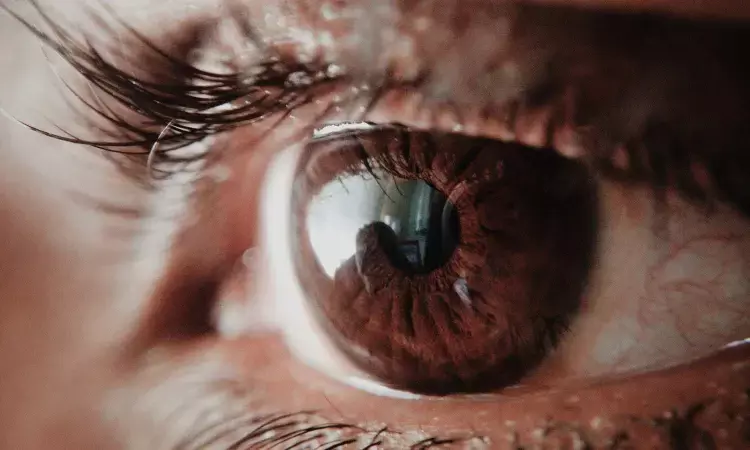- Home
- Medical news & Guidelines
- Anesthesiology
- Cardiology and CTVS
- Critical Care
- Dentistry
- Dermatology
- Diabetes and Endocrinology
- ENT
- Gastroenterology
- Medicine
- Nephrology
- Neurology
- Obstretics-Gynaecology
- Oncology
- Ophthalmology
- Orthopaedics
- Pediatrics-Neonatology
- Psychiatry
- Pulmonology
- Radiology
- Surgery
- Urology
- Laboratory Medicine
- Diet
- Nursing
- Paramedical
- Physiotherapy
- Health news
- Fact Check
- Bone Health Fact Check
- Brain Health Fact Check
- Cancer Related Fact Check
- Child Care Fact Check
- Dental and oral health fact check
- Diabetes and metabolic health fact check
- Diet and Nutrition Fact Check
- Eye and ENT Care Fact Check
- Fitness fact check
- Gut health fact check
- Heart health fact check
- Kidney health fact check
- Medical education fact check
- Men's health fact check
- Respiratory fact check
- Skin and hair care fact check
- Vaccine and Immunization fact check
- Women's health fact check
- AYUSH
- State News
- Andaman and Nicobar Islands
- Andhra Pradesh
- Arunachal Pradesh
- Assam
- Bihar
- Chandigarh
- Chattisgarh
- Dadra and Nagar Haveli
- Daman and Diu
- Delhi
- Goa
- Gujarat
- Haryana
- Himachal Pradesh
- Jammu & Kashmir
- Jharkhand
- Karnataka
- Kerala
- Ladakh
- Lakshadweep
- Madhya Pradesh
- Maharashtra
- Manipur
- Meghalaya
- Mizoram
- Nagaland
- Odisha
- Puducherry
- Punjab
- Rajasthan
- Sikkim
- Tamil Nadu
- Telangana
- Tripura
- Uttar Pradesh
- Uttrakhand
- West Bengal
- Medical Education
- Industry
Combination of cyclosporine and loteprednol may significantly improve corneal higher-order aberrations

The combination of cyclosporine 0.05% 0.1%-loteprednol 0.2% provided significant improvement in corneal higher-order aberrationswhen compared with cyclosporine 0.05% Clinical Ophthalmology.
A study was done to examine the efficacy and tolerability of a combination of cyclosporine 0.1% and loteprednol 0.2% (CsA–LE; Klarity CL) in comparison to commercially available cyclosporine 0.05% (CsA; Restasis) in improving signs and symptoms of dry eye.
This multicenter, prospective, randomized, controlled, open-label study evaluated 60 patients randomized to a single treatment for 4 weeks and evaluated at day 0, day 14, and day 28. The comparison was made of corneal higher-order aberrations (HOAs), dry-eye symptoms (SPEED score), tear-breakup time (TBUT), corneal staining, and ocular hyperemia, as well as tolerability of each medication with the validated COMTOL instrument.
Results
A total of 56 patients completed enrollment. Corneal HOAs improved significantly with cyclosporine 0.05% –loteprednol, but not cyclosporine 0.05% alone. Both groups showed significant improvement (with no significant differences between groups) in SPEED scores, corneal staining, TBUT, and conjunctival hyperemia. Tolerability was similar between the drugs, and no significant safety issues were identified.
The combination of cyclosporine 0.05% 0.1%–loteprednol 0.2% provided significant improvement in corneal higher-order aberrations, while v0.05% did not. For all other measures of ocular surface improvement, both medications showed similar benefits. Tolerability was comparable between the formulations. When rapid rehabilitation of the ocular surface is needed to reduce aberrations, cyclosporine 0.05% –loteprednol is an appropriate choice.
Reference:
John Hovanesian, Thomas Chester & Robert C Sorenson (2023) A Prospective Study of Cyclosporine A 0.1% Combined with Loteprednol 0.2% vs Cyclosporine A 0.05% Alone in the Treatment of Dry Eye, Clinical Ophthalmology, 17:, 2181-2191, DOI: 10.2147/OPTH.S419600
Keywords;
John Hovanesian, Thomas Chester & Robert C Sorenson, Prospective, Study, Cyclosporine, 0.1% Combined, Loteprednol, 0.2% Cyclosporine, 0.05, Alone, Treatment of Dry Eye, Clinical Ophthalmology, higher-order aberrations
Dr. Shravani Dali has completed her BDS from Pravara institute of medical sciences, loni. Following which she extensively worked in the healthcare sector for 2+ years. She has been actively involved in writing blogs in field of health and wellness. Currently she is pursuing her Masters of public health-health administration from Tata institute of social sciences. She can be contacted at editorial@medicaldialogues.in.
Dr Kamal Kant Kohli-MBBS, DTCD- a chest specialist with more than 30 years of practice and a flair for writing clinical articles, Dr Kamal Kant Kohli joined Medical Dialogues as a Chief Editor of Medical News. Besides writing articles, as an editor, he proofreads and verifies all the medical content published on Medical Dialogues including those coming from journals, studies,medical conferences,guidelines etc. Email: drkohli@medicaldialogues.in. Contact no. 011-43720751


